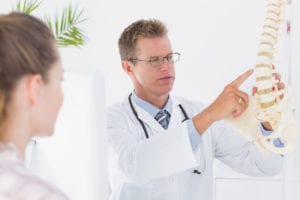Written by Greg Arnold, DC, CSCS. This study, when comparing Chinese women to men, found that the participating Chinese women had significantly higher lumbar spine and hip bone mineral densities which correlated with their significantly higher serum levels of vitamin E.
 Osteoporosis is a major worldwide public health problem, with nearly 54 million Americans having osteoporosis and low bone mass in 2014 1 and 40% of 50-year-old Caucasian women in the USA suffering an osteoporotic fracture in their remaining lifetime 2. Concerning the population of China, there has been a rapid increase in the incidence of hip fractures over the past 20 years 3, necessitating an “urgent” need for preventive measures of osteoporosis.
Osteoporosis is a major worldwide public health problem, with nearly 54 million Americans having osteoporosis and low bone mass in 2014 1 and 40% of 50-year-old Caucasian women in the USA suffering an osteoporotic fracture in their remaining lifetime 2. Concerning the population of China, there has been a rapid increase in the incidence of hip fractures over the past 20 years 3, necessitating an “urgent” need for preventive measures of osteoporosis.
In a 2015 study 4, 3,203 Chinese adults (1,025 men, 2,178 women) between the ages of 40 and 75 completed dietary questionnaires to collect data on their lifestyle habits and habitual dietary consumption in the 12 months before the study. Blood samples were obtained before and after the study to measure for vitamin E (in the form of alpha-tocopherol) while bone density measurements were taken before and after the study using dual-energy X-ray absorptiometry.
The researchers noted a significant benefit to bone health in women but not men. Specifically, women saw a 2.5% increase in bone density in the lower back (lumbar spine, p = 0.017) and a 3.06% increase in overall hip bone density (p = 0.06). Statistical significance was not reached for men in either the lumbar spine density (p = 0.373) or overall hip bone density (p = 0.932). The researchers correlated these findings with the 16.7% higher blood level of vitamin E in women versus men (35 versus 30 micromoles/Liter, p < 0.001).
The researchers believed the improvement in bone health in women versus men had a link to their increased vitamin E levels as vitamin E’s potent antioxidant properties 5 may play a role in limiting the cell damage (oxidative stress) and inflammation thought to be a contributor to osteoporosis 6.
Limitations of this study is the cross-sectional study design which did not allow for the determination of a causal relationship. Also vitamin E supplementation was not included in the assessment of vitamin E intake.
Researchers conclude, “greater consumption and higher serum levels of vitamin E are associated with greater Bone Mineral Density (BMD) in Chinese women but not in Chinese men” and that “further prospective studies are needed to verify the findings in our population.” .
Source: Shi, Wen-qi, Jun Liu, Yi Cao, Ying-ying Zhu, Ke Guan, and Yu-ming Chen. “Association of dietary and serum vitamin E with bone mineral density in middle-aged and elderly Chinese adults: a cross-sectional study.” British Journal of Nutrition 115, no. 1 (2016): 113-120.
© The Authors 2015
Posted February 22, 2018.
References:
- Foundation NO. What is Osteoporosis and What Causes It? 2017; Overview of Osteoporosis and Its Causes. Available at: https://www.nof.org/patients/what-is-osteoporosis/. Accessed February 19, 2017, 2917.
- Tella SH, Gallagher JC. Prevention and treatment of postmenopausal osteoporosis. The Journal of steroid biochemistry and molecular biology. 2014;142:155-170.
- Xia WB, He SL, Xu L, et al. Rapidly increasing rates of hip fracture in Beijing, China. Journal of Bone and Mineral Research. 2012;27(1):125-129.
- Shi W-q, Liu J, Cao Y, Zhu Y-y, Guan K, Chen Y-m. Association of dietary and serum vitamin E with bone mineral density in middle-aged and elderly Chinese adults: a cross-sectional study. British Journal of Nutrition. 2016;115(1):113-120.
- Ames BN. Dietary carcinogens and anticarcinogens: oxygen radicals and degenerative diseases. Science. 1983;221(4617):1256-1264.
- Lacativa PGS, Farias MLFd. Osteoporosis and inflammation. Arquivos Brasileiros de Endocrinologia & Metabologia. 2010;54(2):123-132.

